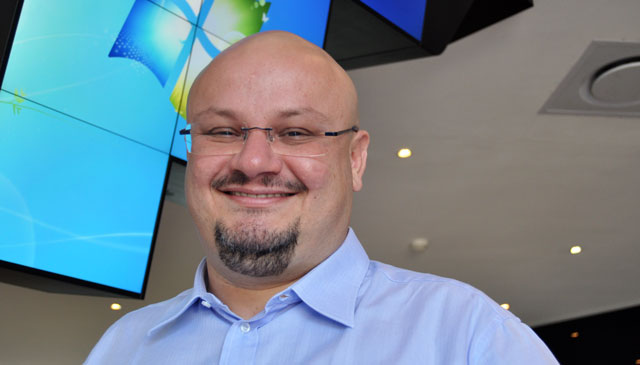
A decade ago, Steve Ballmer described the free and open-source Linux operating system as a “cancer that attaches itself in an intellectual property sense to everything it touches”. The famously boisterous Microsoft CEO was attacking the General Public Licence which governs much of the software code developed by the open-source community.
But 10 years is a long time in the technology industry and if there’s one industry that evolves quickly it’s technology. Today the company is earning compliments — even respect — from some of the leaders in open source, including Red Hat, the enterprise-focused open-source software developer.
It’s even attracting open-source advocates to come and work for it. One of these people is Italian national Gianugo Rabellino — the senior director of open-source communities at Microsoft — who has spent the best part of 20 years making a living from open source. Founder and former CEO of Sourcesense, Rabellino joined Microsoft two years ago — based in the company’s headquarters in Seattle in the US — and says the software maker is making large contributions to the open-source community, both in terms of developer time and in programming code.
So, what changed? Why did Microsoft go from viewing Linux — or at least the licence that governs it — as a cancer to embracing open-source software, at least to some extent?
“I noticed Microsoft was changing and was more open than I thought,” Rabellino says. “Microsoft has become more open and the reason for that is it’s really about it going back to the real Microsoft DNA, to being a platform and ecosystem company.”
Pressure from business customers may have played a big role. “Customers are telling us how IT today is all about pragmatism,” Rabellino says. “It’s all about time to market and using the best tools to get the [best results]. People are calling for open standards and interoperability. The minute we take for granted that it’s a mixed [technology] world, interoperability becomes crucial.”
But growing maturity — among open-source advocates and proprietary software vendors like Microsoft — has also played a role. The almost religious wars between the two sides have largely died out, Rabellino says. “It’s no longer about religion and ideology. Rather, it’s now about pragmatism, efficient, time to market and working together.”
Though he still encounters some distrust towards Microsoft from the open-source community, this is the now exception rather than the rule, he adds. “Every time I have technical discussions, everything is fine. I wouldn’t even call it distrust at this point. It’s an initial attitude from not knowing all the details.”
Microsoft contributes to the Linux kernel and to a range of open-source technologies, often to ensure they work better with its own software platforms. The company has contributed to a range of open-source projects, including jQuery Mobile, MongoDB, Apache Hadoop and Node.js.
It also recently launched TypeScript, an open-source programming language and superset of JavaScript that makes it easier to build complex JavaScript applications for the Web. The company has released a TypeScript plug-in for its own Visual Studio development tools as well as for a range of editors, including emacs and vi, which are favoured by open-source developers.
“At the end of the day, we realised JavaScript had to be ubiquitous so it was in our own best interest to share those results with the community as a whole,” Rabellino says. — (c) 2012 NewsCentral Media




